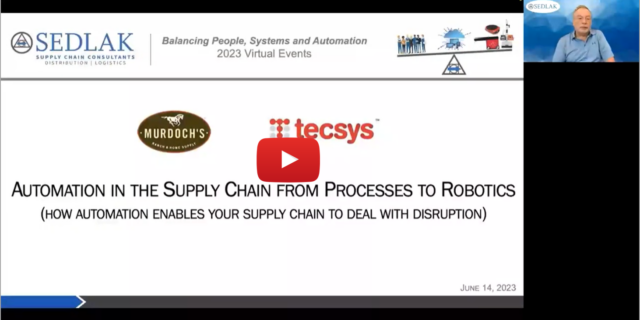The Evolving State of AGVs
February 10, 2021 By: Louis J. Cerny | Topics: Automation & Robotics, Productivity & LaborThe Automated Guided Vehicle (AGV) market is evolving at a rapid pace. As recently as three years ago, AGVs were primarily relegated to simple horizontal moves of pallets over longer distances, either transporting one or two pallets at a time using a system such as Seegrid or lined up in trains with a tugger pulling several carts of pallets. These AGVs often traveled fixed paths and required wires embedded in the floor, which had to be perfectly smooth and level.
As these type of vehicles evolve, so do the guidance options. Many AGVs now use lasers and reflectors. This technology allows for the digital mapping of travel paths. This type of guidance allows the vehicle paths to change easily. The required functionality of the system will help determine the most effective guidance technology.
Most recently, the major mobile equipment vendors and material handling companies such as Dematic have begun to develop or acquire autonomous equipment technologies. This evolution is creating both totally autonomous as well as hybrid (combined manned and automated capabilities) mobile equipment. Several examples can be seen in the pictures below.
Some considerations
Space
Industry experts expect the AGVs will require the same aisle space as the manned vehicles. This is a reasonable expectation since it is unlikely users will want to modify their facilities to accommodate larger aisle requirements.
Speed
The speed of the AGVS are limited by ANSI standards and are typically 50-60% of the speed of manned trucks.
Cost
The prices for the AGV trucks are currently two to three times that of manned vehicles. This, coupled with the slower operating speeds, results in a totally automated fleet costing four to six times what a manual mobile equipment setup would cost. This increased capital is offset by labor savings that can also assure the availability of resources to support an operation 24/7. In addition, reduced damage to the mobile equipment, rack, and inventory—due to the ability of the automated equipment to accurately place product into storage—will provide additional benefits.
Adoption Path
In high-volume operations, the congestion associated with the increased number of vehicles may preclude the ability to effectively go to a fully automated operation. Many operations are beginning to incorporate AGV trucks for long trips, allocating the manned trucks to the shorter high-volume moves. This type of equipment allocation provides the opportunity to begin implementing the technology and provide an upgrade path in the future as technology and the industry matures.
Summary
While it is difficult to predict how the AGVs will evolve or how quickly, it is a reasonable expectation that the number of options available and the sophistication of the technology will evolve at a rapid pace.
The AGV fork truck evolution from manual trucks is still maturing but moving rapidly to meet growing fulfillment demands. Industry analyst firm, Interact Analysis, projected a 2020 AGV growth of 11%. This rate of adoption can certainly be expected to increase as labor shortages and the growth of direct-to-consumer operations continue.
As always, start by defining the operational challenges you are looking to address and then do the due diligence to select the best provider to meet those needs.
Sedlak is here to help you determine the best options for your operational requirements. As we welcome 2021 with optimism, we will continue to provide insight into the technologies and systems that will shape the future of logistics. Look for upcoming blogs and white papers that will address AMRs, Goods to Person, and WES/WCS, along with other topics. We will also be hosting a virtual conference this March that will cover the topics most important to supply chain professionals today, so keep an eye out for more information!





